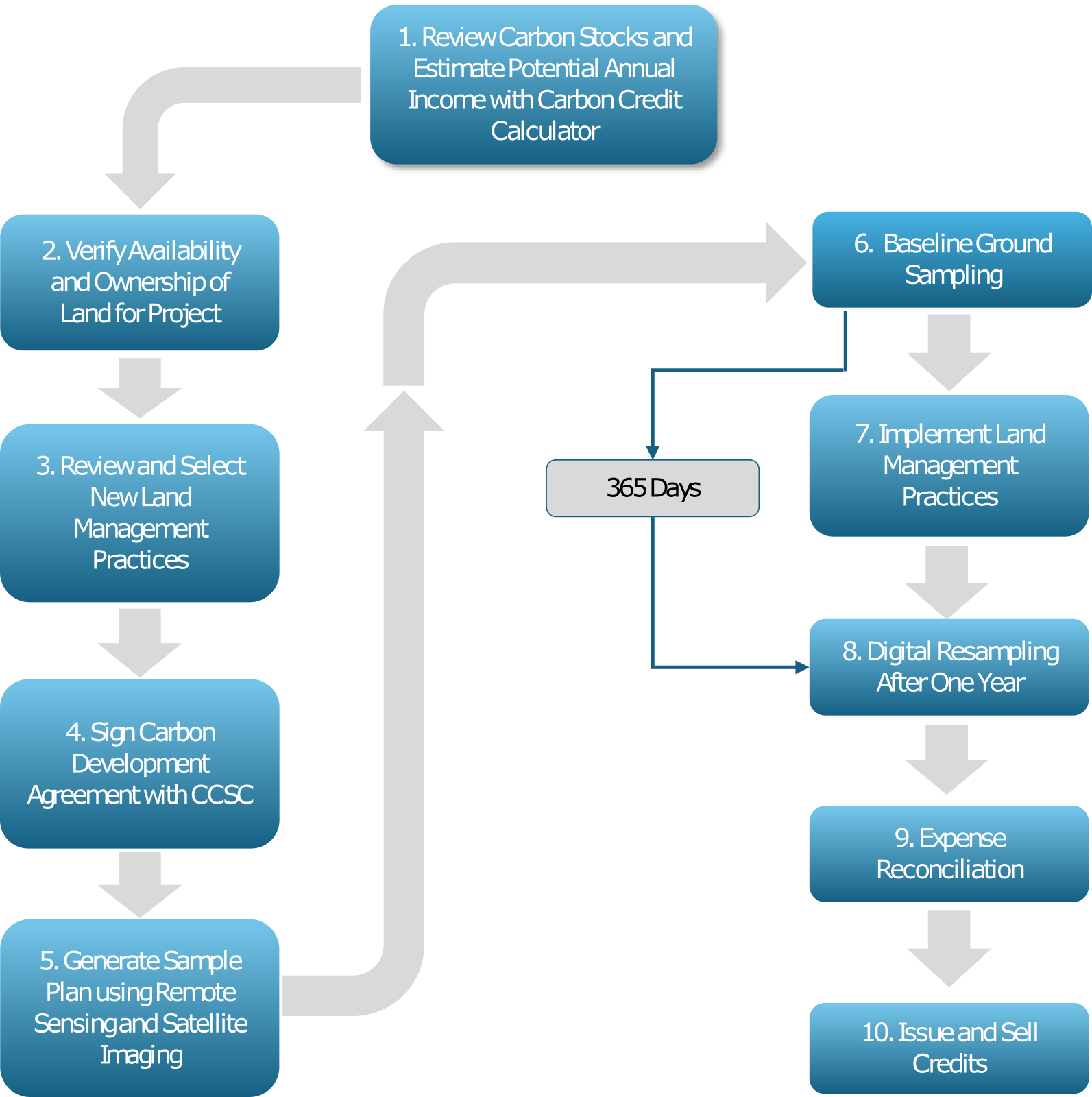Innovative Leader in Full-Service Carbon Management and
Project Development
The Process Of Creating and Selling Carbon Credits

What is a Carbon Credit
A carbon credit is a unit of exchange that represents one metric ton of independently verified soil carbon or woody biomass accumulation that is traceable back to a specific carbon project.
Before a carbon credit can be produced, the project developer must provide measurable proof that newly adopted land management practices have increased soil carbon or woody biomass accumulation.
Once a growing season has been completed and a qualified third party has conducted and approved a detailed review of all aspects of the carbon project, serialized and trackable carbon credits can be issued by a Carbon Registry.
.
Voluntary Carbon Market
The Voluntary Carbon Market enables businesses, governments, nonprofit organizations, and individuals to support soil carbon sequestration in land-based biomes through the sale and purchase of carbon credits.
The value of the global voluntary carbon market has quadrupled since 2020, reaching over US$2B in 2022, according to non-profit Ecosystem Marketplace. This quadrupling in market value from 2020 was driven by an acceleration of nature-based solutions trading volume and higher prices for these projects with non-carbon environmental and social benefits.
Ecosystem Marketplace also attributes this tremendous growth to international efforts to standardize the voluntary carbon market, increasing transparency and quality – in particular, by the Integrity Council who is looking to provide a framework for the identification of high-quality credits that create real, additional, and verifiable climate impact with high environmental and social integrity.
Carbon Sequestration
Carbon sequestration is the process of capturing, securing, and storing carbon dioxide (CO2) from the atmosphere. Biological carbon sequestration happens when carbon is stored in the natural environment, such as forests, grasslands, and soil. Studies have shown that increased soil carbon can contribute to the re-establishment of the small water cycle, effectively storing more water within a watershed and helping to normalize weather patterns.
The amount of carbon stored in soils is variable, and how much carbon soil can sequester is dependent on many local factors like local geology, soil type, and vegetation. On average, forests store twice as much carbon as they emit, while an estimated 25% of global carbon emissions are sequestered alongside forests in other vegetative forms, such as grasslands or rangelands (fields, prairies, shrublands etc.). Soils farmed in a regenerative manner can act as a vast carbon sink that increases soil health, soil biodiversity, and water storage capacity.

Carbon Credit Registry
Carbon credit registries issue credits based on defined certification protocols, keep track of available offsets in the marketplace, and when offsets are purchased, registries are responsible for tracking the retirement of credits to ensure that two purchasers cannot claim the same verified carbon sequestration. Carbon registries are essential because they provide a way for companies and governments to measure, report, and verify sequestered carbon.
